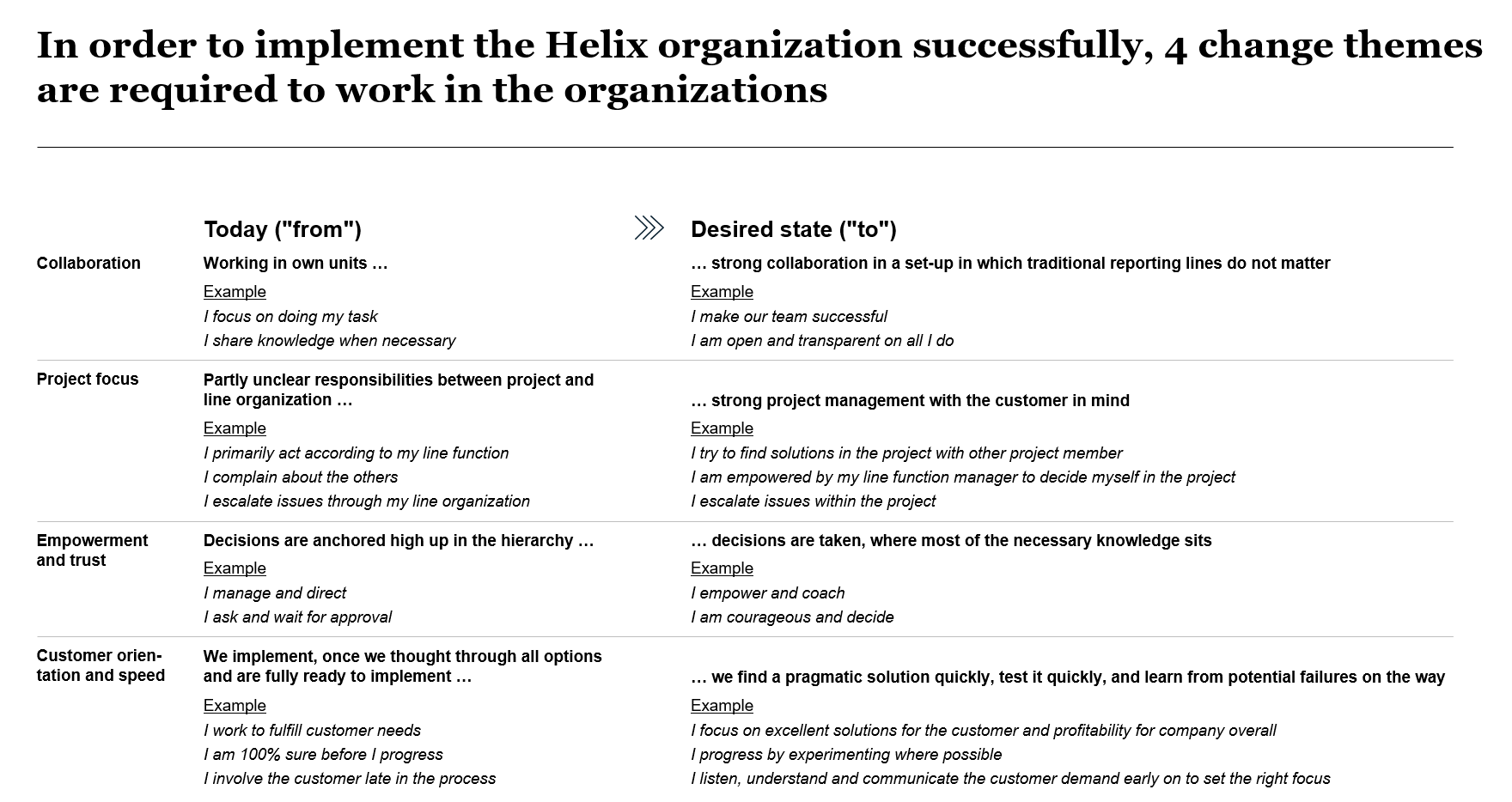The helix organization model, which we explored in part one and part two of this blog series, separates people-leadership tasks from day-to-day business leadership, helping organizations strike a better balance by reducing complexity and increasing flexibility, encouraging faster decision-making, and empowering employees to act.
In order to make this model a success, changes beyond the structure need to be made. The following recommendations help ensure that an organization is set up for success:
- Make resource planning transparent, flexible, and focused on value
The biggest advantage of the helix organization is the flexibility, which people can be shifted between value-creating areas where the organization sees the highest return on its investment. To enable this, best-in-class organizations attach this process to a quarterly priority setting process (e.g. as we see it in many agile organizations a quarterly business review “QBR”). When quarterly priorities across the value creation areas are defined, implications on resource shifts can be derived. By that value-creation leaders give capability leaders ample time to match supply to demand for skills and roles.
A leading consumer goods company which struggled to compete in the market owing to slower decision making as compared to its peers achieved significant reduction in time to market by implementing the helix organization model. This organization dedicated resource allocation as one of its core priorities in the QBR at the highest level to improve its focus on value.
- Create a talent marketplace
Whenever shifts of resources are decided on in the resource allocation process, a transparent talent marketplace is required to staff the right people at the right time to the right topic. This requires that leaders have a detailed understanding of available human resources. Companies who do that well, have a digital marketplace, where supply and demand are listed, with a transparency on people’s profile. In larger organizations we also find new HR profiles called “Staffer,” that support the matching of supply and demand and deal with potential conflicts between value creation areas.
A consumer company defined the role of a “Staffer” who staffed from skill groups to squads by matching necessary skill sets and was aligned either to a tribe or a non-tribe skill group.
- Support leaders shifting their mindsets and organization’s culture
Both kinds of leaders need to adapt a “we over me” mindset; value-creation leaders need to accept that management of the day to day business can work without a traditional “formal” solid people line, and need to learn how to operate in this model using other methods to align people behind the joint goal. The model also requires a stronger culture of collaboration, to align resources and business requirements in the best way, a culture of trust and partnership.

An automotive company decided to take out capability managers (e.g., Head of R&D, Head of Marketing) from stage gate meetings. As a result of this, the project team members felt much more empowered to make real decisions on the process and the meetings became much faster and focused.
- Balance performance management across the two roles
In a helix structure, the two people leaders must be aligned and willing to participate in employees’ performance reviews. These processes – and hiring and exiting people – should incorporate feedback from both. Usually it is led by the capability manager, collecting feedback from all people who worked with the employee.
It is not easy to transition to a helix model. As outlined above, the process requires significant changes in how an organization operates and how leaders manage, in turn demanding a relinquishing of control, and a healthy dose of humility. However, when implemented correctly, the helix model offers organizations the flexibility necessary to succeed in today’s market.
For more information, please read our article, “The helix organization.”

